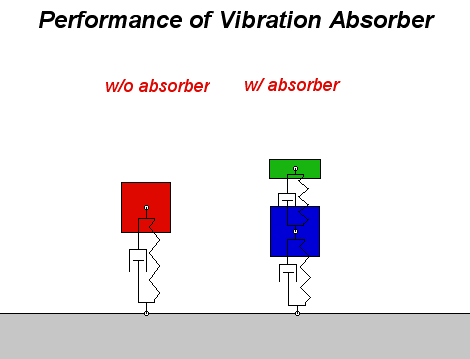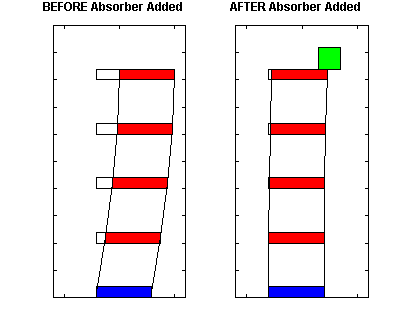We have learned that an effective way to passively control vibration is through the usage of a "vibration absorber". A typical vibration absorber is a single-DOF spring/mass/dashpot system that is attached to a vibration body. The stiffness and mass of the absorber are designed in order to produce an "anti-resonance" in the total system response. For a single-DOF system, the absorber is "tuned" to match its natural frequency with the natural frequency of the original system. With this choice:
- An anti-resonance is produced at the natural frequency of the original system.
- The larger the mass of the absorber the larger the bandwidth between the resonances of the absorbed system.
- Typically light damping is desirable in order to minimize the response at the operating frequency.
Shown below left is the original single-DOF system with base excitation that is experiencing near-resonant response. On the right is the same system with an absorber mass (in green) attached to the original system. The natural frequency of the absorber was tuned to the natural frequency of the original system, and light damping was used for the absorber dashpot. As can be seen in the simulation, the motion of the original system has been reduced to nearly zero displacement, demonstrating the effectiveness of the absorber design.
 |
As a second example, consider the five-story building (having four-DOFs) shown below left that is experiencing harmonic seismic motion. The base motion has excited the first mode of the building. For the building shown to the right, a single-DOF absorber (green) has been added to the top floor (the spring and dashpot are not shown). Here again the absorber is tuned to the first natural frequency of the building. With light damping in the absorber, the relative inter-floor motion of the building has been effectively reduced to zero. This example is discussed in the course lecture book.
 |